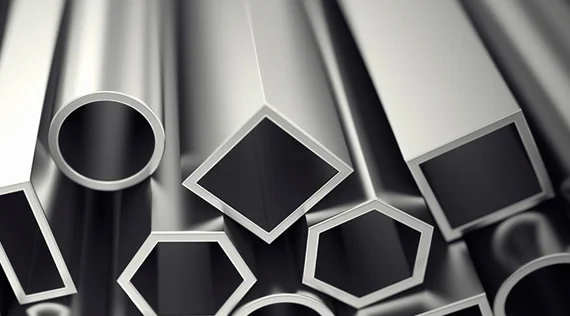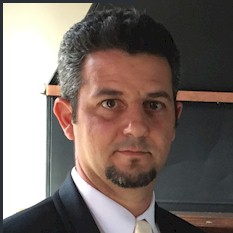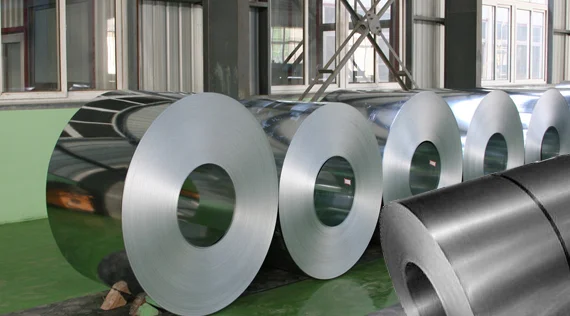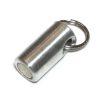American Aluminum Plants are Bigger Polluters Than Some Abroad
Aluminum | 2022-12-28 11:50:09
In some cases, multinational companies have slashed emissions at their overseas facilities while continuing to operate older U.S. plants with some of the highest PFC emissions rates in the world.

SEATTLE (Scrap Monster): As Mary and Ed Cupp drove down a country lane toward the front gate of Century Aluminum Sebree, they couldn’t help but wonder about the barrage of signs extolling the company’s core values of “health, safety, and sustainability.”
One billboard in particular, a sign informing passersby that “we each have the capability—and the responsibility—to lead,” caught their eye.
“If you live a good life, and you live your principles, people see it; they don’t need to be told,” Mary Cupp, 78, a member of the local Sierra Club group said, recounting a lesson she learned early in life growing up a pastor’s daughter in nearby Owensboro, Kentucky.
Cupp, a retired professor, had reason to be skeptical. Century Aluminum Sebree, a series of long, metal buildings built along the Green River nearly half a century ago, is the largest emitter of perfluorocarbons (PFCs) from aluminum production in the United States.
Though considered non-toxic by the U.S. Occupational Safety and Health Administration, tetrafluoromethane (CF4) and hexafluoroethane (C2F6), PFCs that are unwanted byproducts of aluminum production, are among the most potent and longest-lasting greenhouse gases on the planet. They belong to a class of synthetic, fluorine-containing chemicals known as “the immortals” because of how long they remain in the atmosphere. Once the gases are released, they are “essentially permanent additions to the atmosphere,” the Environmental Protection Agency notes.
PFCs threaten “the public health and welfare of current and future generations,” according to a 2009 determination by the EPA as part of a sweeping “endangerment finding” on greenhouse gases. However, unlike carbon dioxide and methane, the EPA does not regulate PFCs.
CF4, the primary PFC released by Century Aluminum, is 7,380 times worse for climate change than carbon dioxide on a ton-for-ton basis over a 100-year period. But, unlike CO2, which remains in the atmosphere for approximately 300-1,000 years, CF4 remains in the atmosphere for 50,000 years.
In 2021, the Sebree plant, the largest U.S. aluminum production facility operating at full capacity, vented 24 tons of perfluorocarbons (PFCs) into the air. The emissions equal the annual greenhouse gas emissions of 40,000 automobiles—ones that will remain on the theoretical road for tens of thousands of years.
Meanwhile, a newer plant also owned and operated by Century Aluminum in Grundartangi, Iceland, emits just one sixth the perfluorocarbons (PFC) emissions per ton of aluminum, as compared to the company’s Sebree plant, according to an Inside Climate News assessment of Environmental Protection Agency data as well as financial and environmental reports published by Century and Nordural, its Icelandic subsidiary.
It’s a tale of two smelters: older U.S. plants with some of the highest PFC emissions rates in the world and their overseas counterparts with far lower emissions — even when operated by the same multinational companies. The contrast highlights why the U.S. aluminum industry needs revitalization, environmental advocates say, even as it has declined precipitously in recent decades.
In a case similar to that of Century Aluminum, Alcoa’s Intalco smelter in Ferndale, Washington, emitted nearly 50 tons of PFCs in 2020 before curtailing production.
That’s in contrast to Alcoa’s Fjarðaál smelter in Fjarðabyggð, Iceland, which has a PFC emissions intensity less than one fortieth that of the recently shuttered Intalco smelter, according to an Inside Climate News assessment of EPA data, the company’s production data, which was obtained through a public records request, and data the company publishes for its facility in Iceland.
Jim Beck, a spokesperson for Alcoa said “we do not disagree” with the assessment. Beck added that emissions from the Intalco facility were high “due to the older technology and operational instability that the facility was experiencing.”
Century Aluminum offered a similar explanation for its Sebree plant, which was completed in 1973.
“When comparing numbers between Sebree and Norðurál Grundartangi it is important to note that the Iceland facility is a (sic) newer and more technologically advanced,” Steinunn Dögg Steinsen, vice president of health safety and environment for Century Aluminum, said in a written statement. Steinsen added that the smelting process at the plant in Iceland is more automated, resulting in more efficient production, while the Sebree plant relies more on manual controls, which are less precise.
Twenty years ago, the U.S. led the world in aluminum production and in a worldwide effort to reduce PFCs. Now, just 1.5 percent of global aluminum smelting, or production, takes place in the U.S. Meanwhile, efforts to reduce PFC emissions in America have stalled while the cleanest smelters in other countries have brought emissions of the potent greenhouse gas down to near zero.
In some cases, multinational companies have slashed emissions at their overseas facilities while continuing to operate older U.S. plants with some of the highest PFC emissions rates in the world.
Industry analysts say the stark contrast is due to regulatory differences and the relative cost of electricity, the largest expense for the energy-intensive industry. Iceland, which is subject to the European Union’s carbon trading market, places a high price on PFC emissions based on the gas’s outsized climate impact. There is no such fee or regulatory limit for PFC emissions in the U.S.
Courtesy: www.penncapital-star.com
 By
By 



